Poured concrete has long been the go-to material for patios. It’s affordable, durable, and easy to install. But concrete has some downsides – it can crack, stain, and fade over time. Plus, it lacks aesthetic versatility.
If you’re looking to pave your patio with something other than boring old concrete you have options! Here are 5 compelling alternatives to explore
1. Natural Stone
Natural stone like flagstone, bluestone, and granite make for a high-end patio material The natural patterns and earthy textures of the stone look elegant Since no two stones are alike, your patio will have a unique, custom look.
The downside is that natural stone is one of the most expensive patio materials. Plus, working with the heavy material can significantly drive up labor costs. Despite the high price tag, natural stone patios have outstanding longevity when properly installed.
2. Brick
Clay brick is another classic patio paving material. The modular pavers interlock neatly together. Brick comes in a variety of colors, shapes, textures and patterns, so you can customize the look.
Installing a brick patio is relatively affordable compared to other options, and brick is highly durable. Repairing damaged sections is easy – just remove and replace individual damaged bricks as needed.
On the downside, brick can crack over time, allowing weeds to grow in the crevices. Sweeping debris out of the cracks can become tedious. Still, brick is an attractive, versatile choice for patios.
3. Tile
Ceramic, porcelain or natural stone tiles make a stylish patio flooring option. Tiles come in a vast array of colors, shapes, finishes and patterns, providing limitless customization. Mix and match tiles in mosaics or geometric layouts for artistic patios.
Tile is a bit pricier than brick or concrete. Irregular patio shapes can drive up installation costs due to difficult tile cuts. Tile also can crack or chip under impact. Overall, tile patios have a refined, high-end look.
4. Composite Pavers
Composite pavers are a newcomer that offer an eco-conscious alternative to concrete. Made of recycled plastic mixed with wood fibers or aggregates, composite pavers have the natural look of wood, stone or brick without the maintenance.
Benefits include excellent durability, fade resistance, and slip resistance. Installation is easy thanks to the interlocking paver system. Damaged pavers can be replaced individually as needed.
Composite pavers cost a bit more than poured concrete upfront. But their longevity and virtually maintenance-free nature provide long-term value.
5. Poured & Stamped Concrete
You can upgrade a basic poured concrete patio by stamping patterns into the wet concrete. Popular stamp patterns mimic brick, stone, wood planking, tiles or other designs. Staining the concrete or embedding accents like pebbles adds further interest.
Stamping is an affordable way to transform a boring slab into a faux brick, slate or other high-end look. But stamped concrete still carries the durability issues of standard concrete. Cracks in the surface can detract from the decorative stamping over time.
Key Considerations for Patio Materials
When weighing your patio paving options, keep these factors in mind:
Cost – Brick, tile and composite pavers fall in the moderate price range, while natural stone is premium-priced. Stamped or poured concrete is the most budget-friendly.
Durability – Natural stone lasts the longest, followed by brick and tile. Concrete is prone to cracks, which can lead to early deterioration. Composites offer excellent longevity for the price.
Maintenance – Concrete requires the most maintenance to keep a clean, attractive look. Composites require virtually no maintenance. Natural stone, brick and tile fall in the middle.
Customization – Tile offers the most design flexibility, followed by brick and composite pavers. Concrete and natural stone have minimal customization capability.
Eco-Friendliness – Composite pavers win here, diverting plastics from landfills. Natural stone and brick are other good choices. Concrete has the largest carbon footprint.
Slip Resistance – Tile and stamped concrete can get slippery when wet. Composites, stone and brick provide better traction.
Bring Your Dream Patio to Life
When designed and installed properly, any of these patio paving materials can provide an outdoor space you’ll love for decades to come. Think about your priorities – budget, aesthetics, maintenance, eco-impact and slip resistance should all factor in.
Your contractor can help you select the best material for your goals, site conditions and design vision. Investing in a quality patio floor now will pay dividends for years through enhanced outdoor living enjoyment.
Ready to design your dream yard?
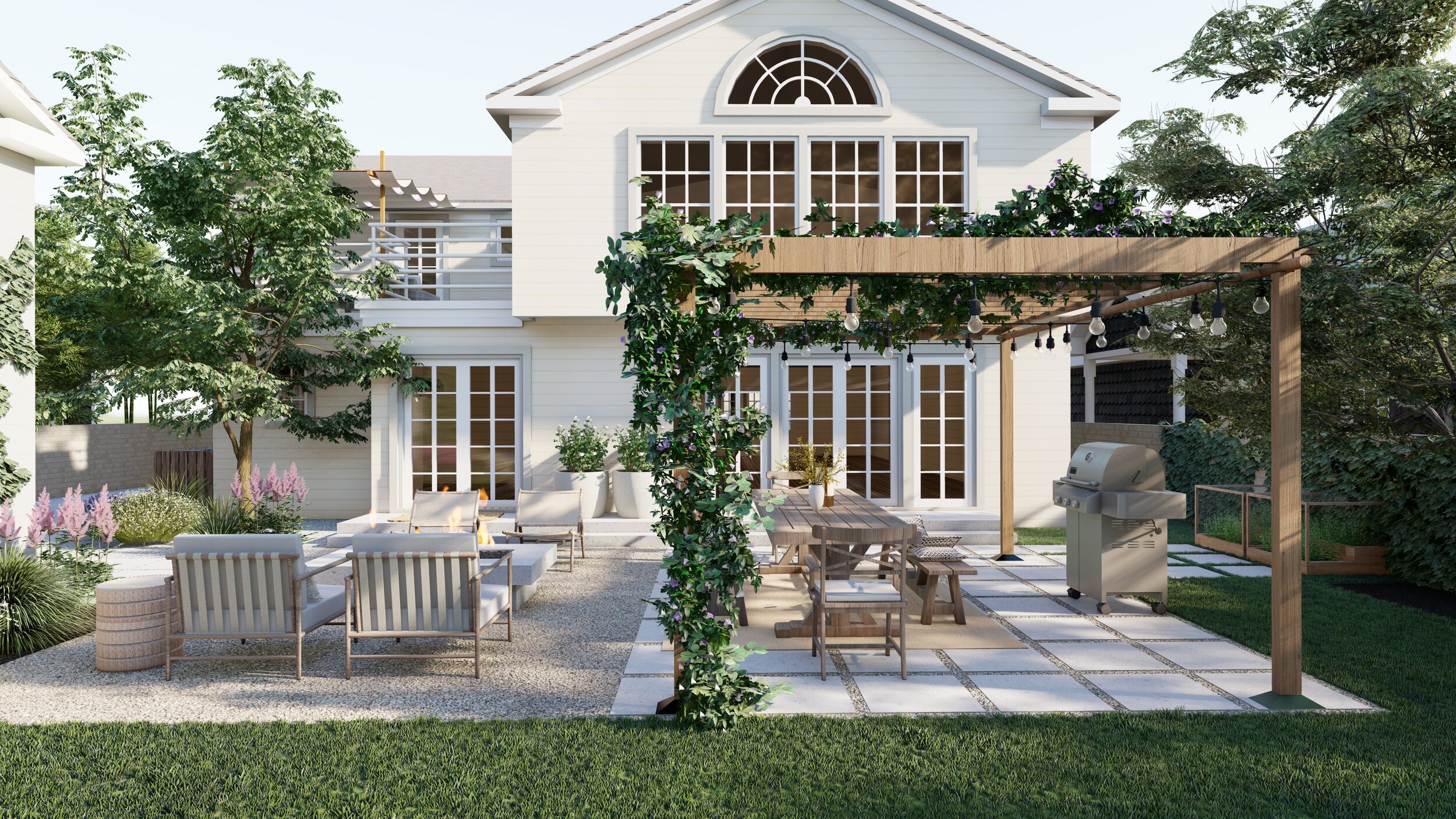

Paving, which includes concrete, stone, and tile, and paving alternatives, such as gravel and mulch, are what we walk on, sit on, cook on, eat on, and play on in yards. We will talk about various types of paving (hard surfaces) and other surface materials that can be used to make paths and spaces that are useful.
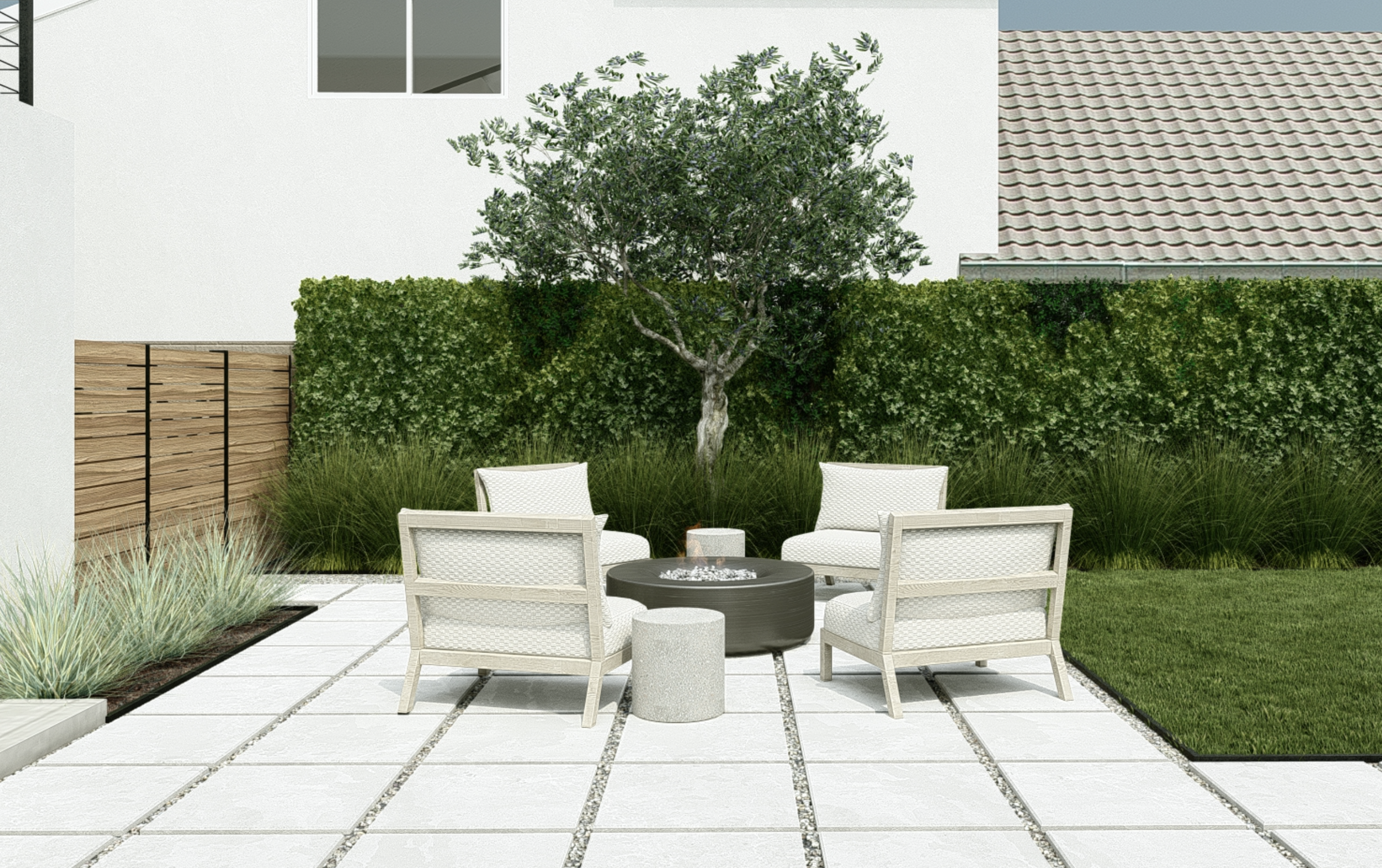

Large-format pavers in this Yardzen yard
Large Concrete Pavers: $24 per square foot (precast); $60 per square foot (custom)
Big square or rectangular concrete pavers with small gaps filled with low plants or rocks look great to many people.
There are two ways to achieve this: precast pavers or custom poured concrete.
For custom pours, a wood mold has to be made for each concrete paver, which takes a lot of work. Complex patterns and larger paver sizes require custom pours. A lot of contractors like to pour because it’s safer, easier, and less likely to fail in the future.
Precast pavers are purchased hard and ready-to-install. Landscape supply outlets typically carry large pavers at 2’x2’, but rarely larger. Some manufacturers make bigger pavers, but these are usually special orders that cost a lot to buy and ship, so the money you save by not having to do a custom pour is lost.
Once they are put down, precast pavers are more likely to move or settle on their own. The straight path you start with may become wavy over time if the soil is unstable or there are tree roots in the way.
No matter how you install them, “gapped” pavers work best for paths or seating areas where people won’t move their chairs around a lot. The gaps aren’t good for kitchens or dining rooms because a chef could trip or a chair leg could slip between the pavers.
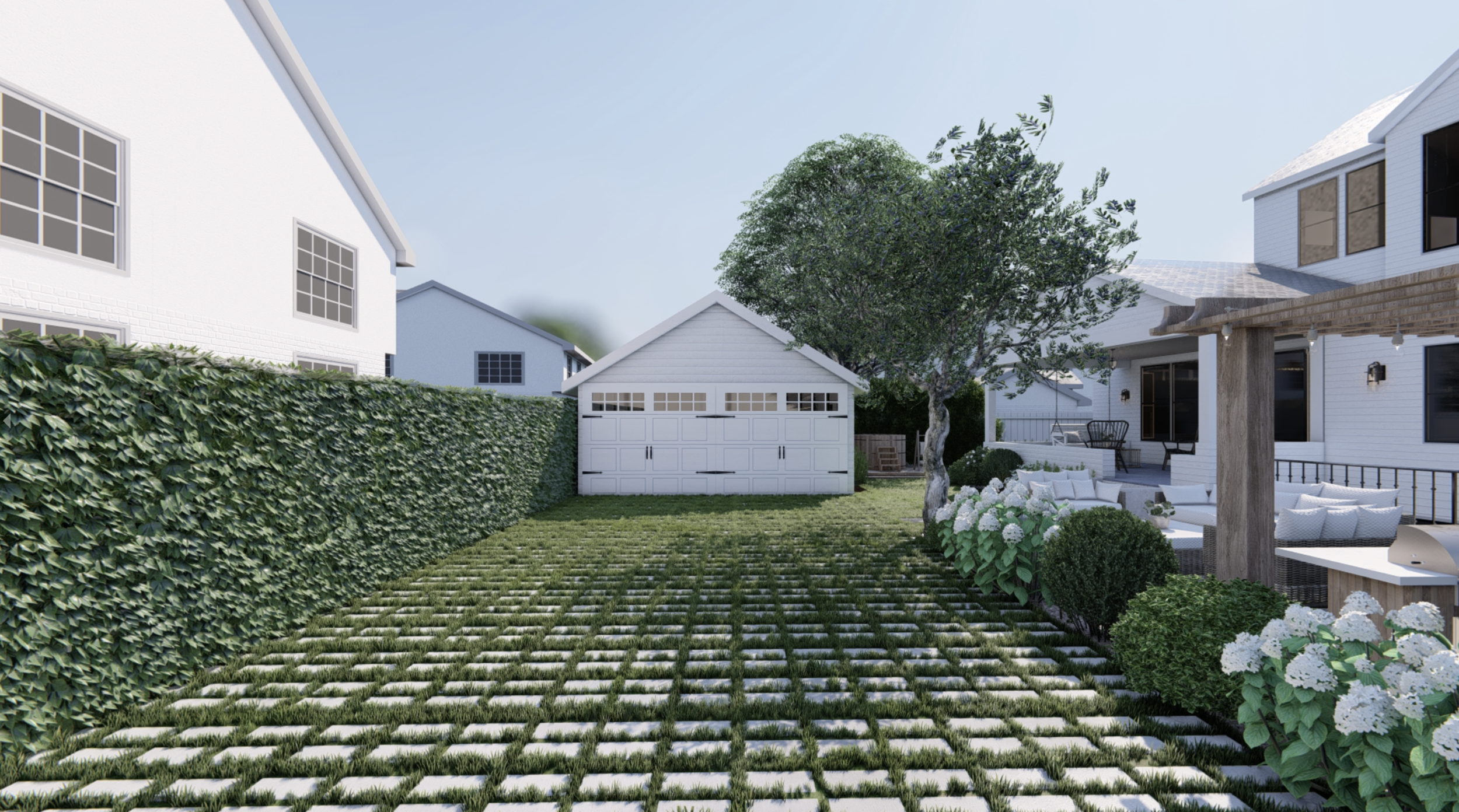

Standard Concrete Pavers: $24 per square foot (sand-set); $60 per square foot (mortar-set)
In general, precast concrete pavers are the least expensive type of paver. However, the prices vary based on size and style.
For residential use, pavers are often brick-sized (4”x 8”) or slightly larger. These smaller scale pavers establish a comfortable, intimate feel.
Want something fancier? Go bigger. The larger the paver, the more formal things feel.
Modern designs skew toward cool gray tones, while traditional designs often lean on warmer neutrals. Modern or not, it’s a nice touch to select pavers that mimic or complement the regional landscape.
Install pavers with any standard pattern – we often go with herringbone and multi-size Versailles patterns. In many cases, manufacturers design pavers to interlock, even in multi-sized patterns, making installation quick and simple.
Mortar-set pavers are put down on top of a concrete slab and are much more expensive than standard sand-set pavers, which are put down on rock and sand that have been packed down. The good news is that sand-set is a great approach for most residential paving jobs.
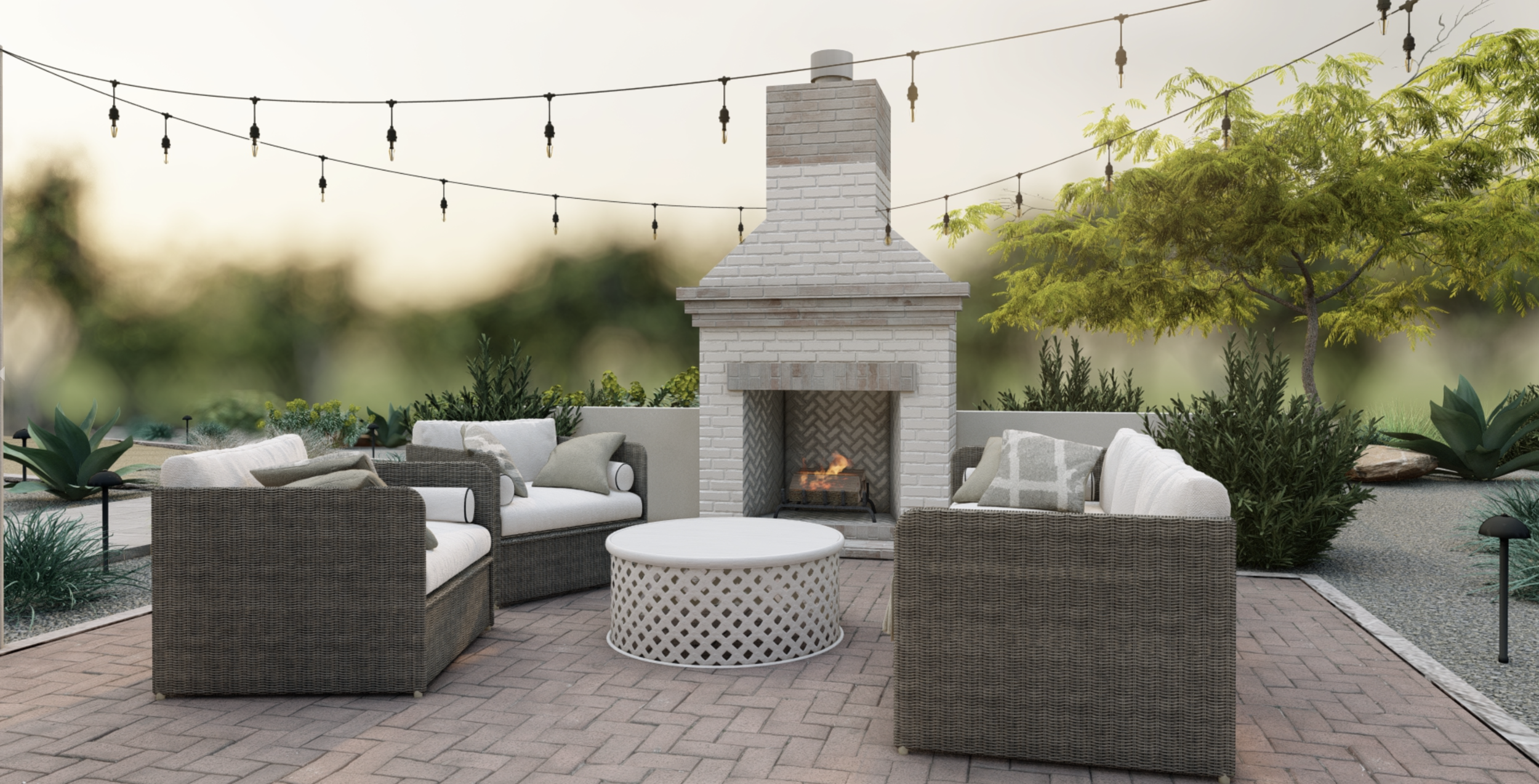

Brick: $24 per square foot
Brick costs and acts like concrete pavers, but conveys a more historic feel. Bold red feels particularly traditional; visible wear and neutral hues feel more rustic and contemporary.
Add a coat of whitewash to give brick a versatile, vintage look. When you whitewash brick, it turns a pale pink color with white spots on it. This gives you more style options because more materials and colors will look good with whitewashed brick than with bright red brick.
There are a lot of great brick patterns, but we think that herringbone or basket weave patterns are best for patios and other places where people like to relax.
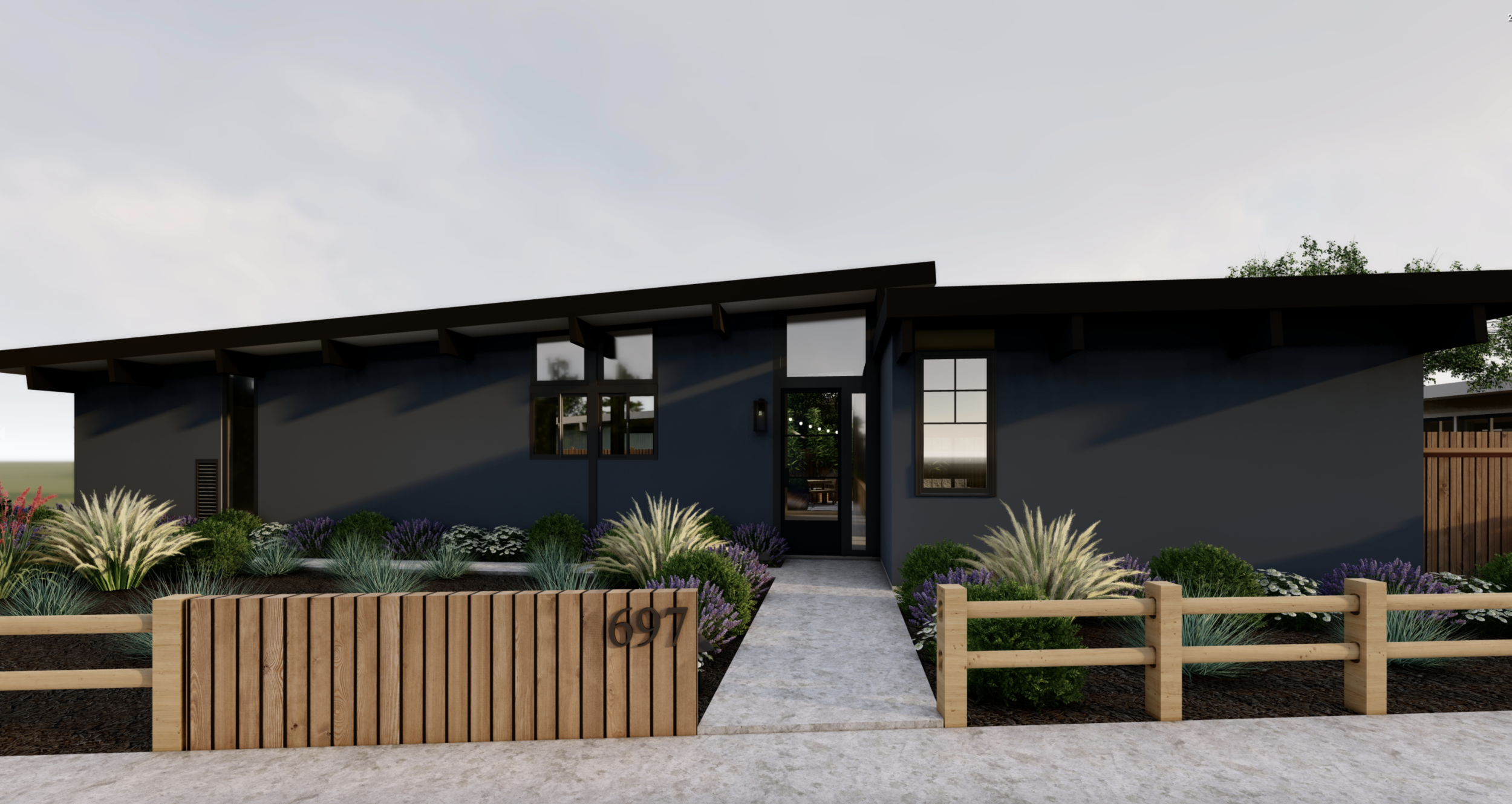

Concrete: $18 – $22 per square foot
Cost-effective, versatile, and super durable, concrete looks great in almost any landscape style.
You can adjust its color and texture for aesthetic effect, and to improve slip-resistance. Try darker concrete in lush, enclosed spaces, or brighter concrete in sunny, open areas. Use a broom-finish texture to amp up the slip resistance on paths, pool decks and cooking areas.
Short of asphalt, a basic concrete slab is the cheapest paving option. Even with texture or color treatments, concrete is still cheaper than most pavers.
When they get too big, concrete slabs feel cold and commercial, even though they look nice when they are smaller. Big slabs also cost a lot. We recommend adding a pattern to make the scale seem more real. This could be a stamped design, a diamond or square grid of score joints, or both.
Stamped concrete can look like many types of paving, from natural stone to intricate paver patterns. It can be used for paths, patios, and other lighter-duty areas, but not for driveways because they tend to crack.
Tile $45 – $65 per square foot
Tiles are made from clay or porcelain, and require a concrete base, hence the higher price tag.
For a Mexican-style patio, clay Saltillo tiles look great and go well with colorful accent strips of patterned tiles. Use these patterned tiles on the risers of steps or as a band set back a foot or two from the edge of a seating area.
Porcelain tiles run the gamut of colors and styles, and are super durable.
In general, tiles are a great way to improve the look of outdoor areas because they look good. Just be careful not to slip on them when they’re wet, though.
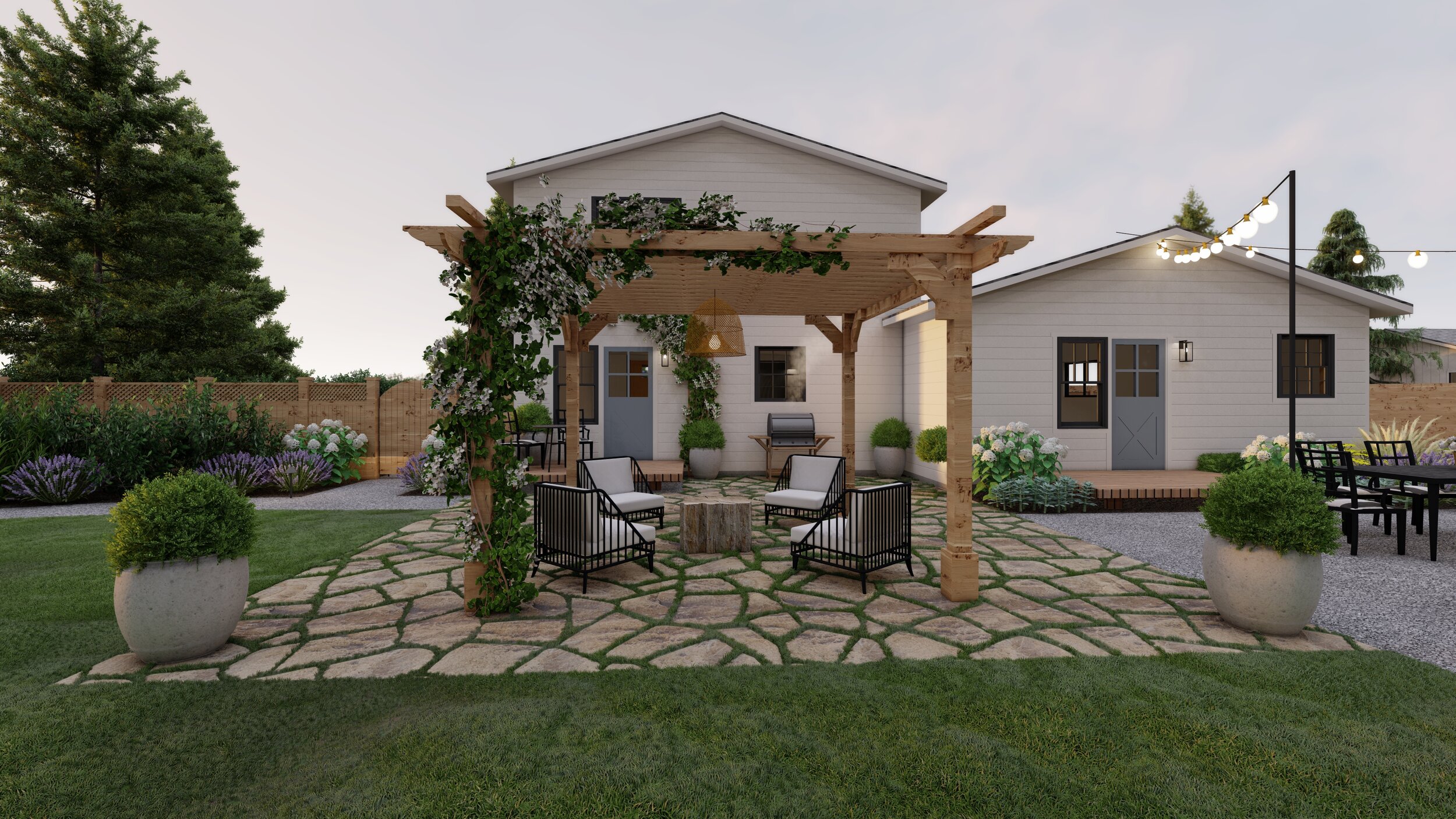

Flagstone in a Yardzen yard
Stone: $60 per square foot
Stone is super durable, and boasts attractive natural color variation that is hard to beat.
For a natural look, install stone pavers with curving edges. For a more upscale look, go with large stone pavers cut to rectangular dimensions.
Stone is at the top of the paving price spectrum, particularly if you opt to mortar-set it.
To offset cost, get local stone. You’ll save on shipping costs, and your stone will evoke the regional landscape. In the northeast, go with bluestone; the northwest, basalt; the southwest, sandstone or Mexican travertine.
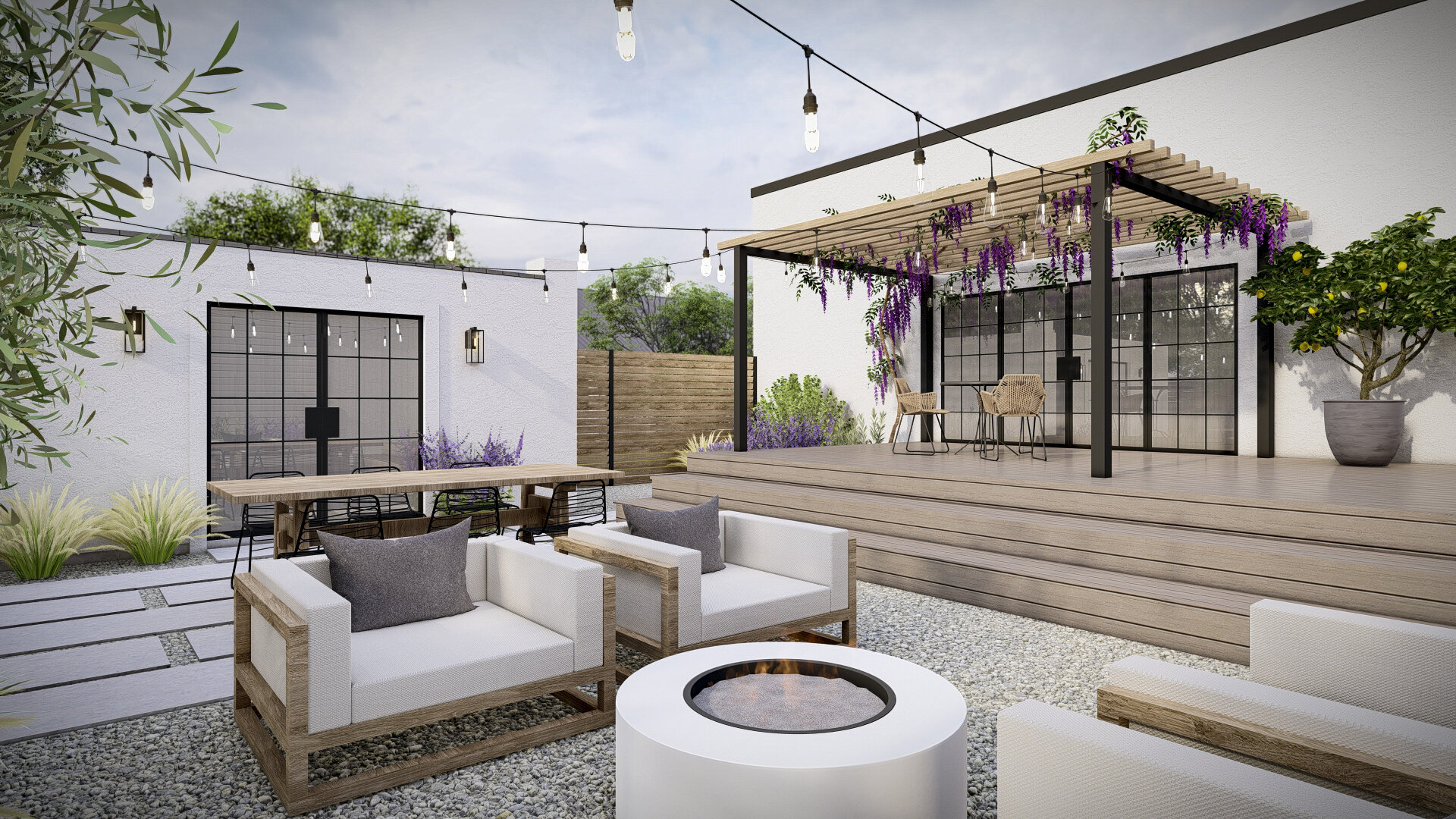

Decking: $65 per square foot
Decking is a structure. Even decks that are built flush with the yard around them need a frame that goes below the ground to hold up the planks on top.
Composite decking like TimberTech has become the best choice for decking materials since the price of wood has gone through the roof. It’s very flexible, easy to work with, looks great, and has a strong history of being environmentally friendly.
Our advice: build decks where you need them, and keep them simple. If your yard has rough terrain, decks can make it more useful, but paving is usually a cheaper option for flat areas.
Pea gravel in a Yardzen yard
Gravel + Small Stone: $6 – $10 per square foot
Gravel is a workhorse material. In a variety of design styles, it looks good (in a rustic way), lasts a long time, and is cheap.
Also, it’s permeable, which means water can drain through it. This helps keep water clean and stops flooding, erosion, and water pollution.
When put next to solid paving, gravel looks great. It’s also great for fire pits, raised bed gardens, and casual dining areas.
For paths and seating areas, use smaller gravel sizes. Rocks bigger than 1′ in diameter are not good for walking on. If kids are going to play on it, round gravel is best. However, babies and toddlers should stay away from gravel because they like to eat it. Keep gravel a few feet away from the edge of pools so that people don’t kick it into the water.
Larger river rocks or Mexican pebbles can be used as decoration or as mulch in a garden bed for areas where people don’t want to walk.
If using a stone mulch, be mindful of sunlight. If you put stone in full sun, it will soak up heat and warm the ground below it. You should only use stone with plants that can handle heat. Stone mulch in the shade avoids this complication.
Like with bigger stones, look for gravel or rock mulch that is native to your area to match the style of your home and save money.
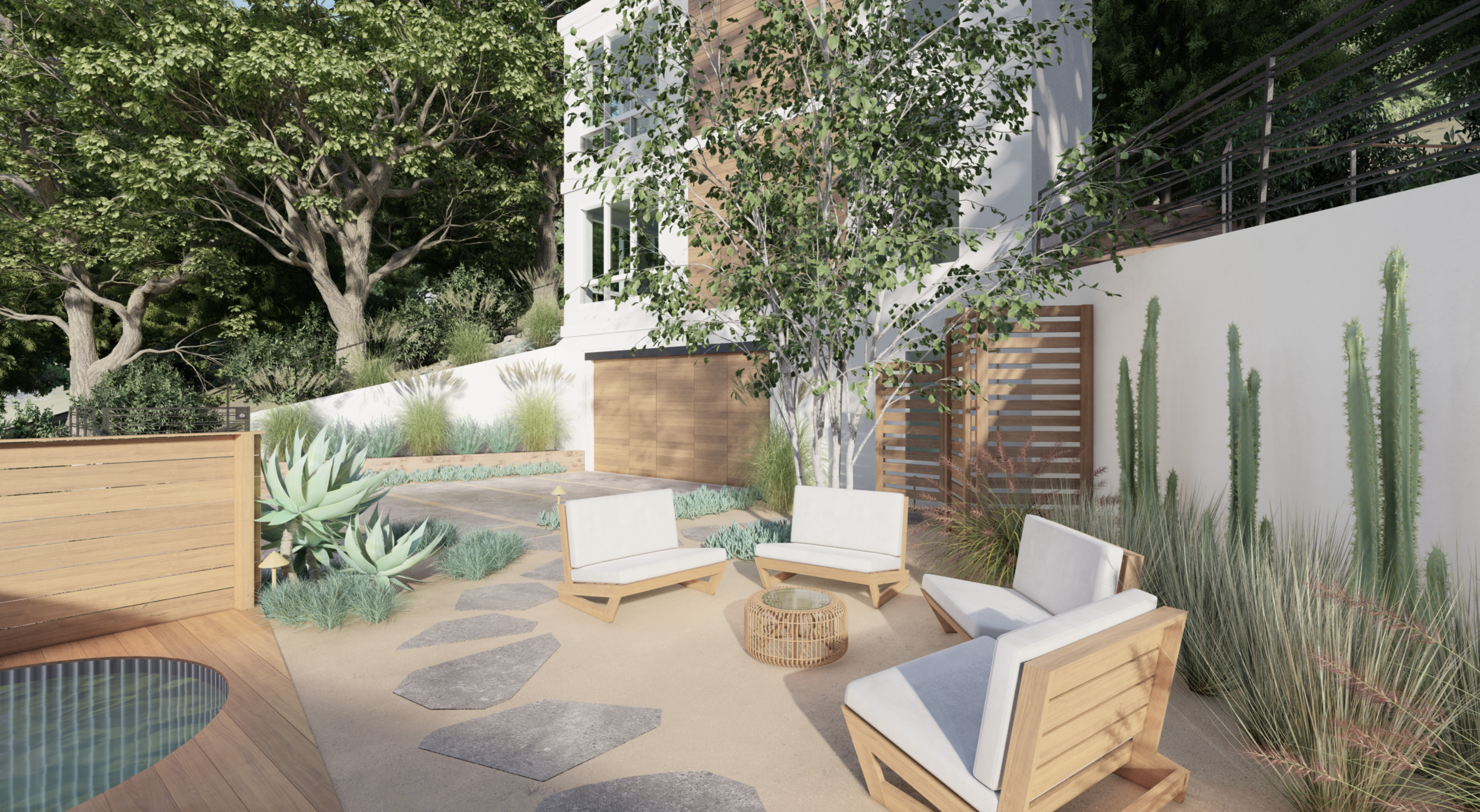

Decomposed granite in a Yardzen yard
Decomposed Granite: $12 per square foot
“DG” costs a bit more than gravel, but offers a smoother walking surface. Dogs and kids can pretty much play on it without getting hurt, but it can scratch wood floors if they get on them.
A tan color of DG is popular because it makes people think of rough southwestern landscapes. Tan DG, corten planters, and limestone accents look great together. In the northern US, DG is more common in a cool gray tone, evocative of bluestone.
Use DG for informal paths and seating areas, the same as you’d use gravel. Put something between it and the outside doors that is at least as high as your shoes to keep it off your feet.
We don’t recommend DG as a mulch. It drains very slowly, forms puddles, and deprives plants of oxygen. To keep the look of the DG zones and planting areas smooth, choose gravel mulch that is the same color as the DG.
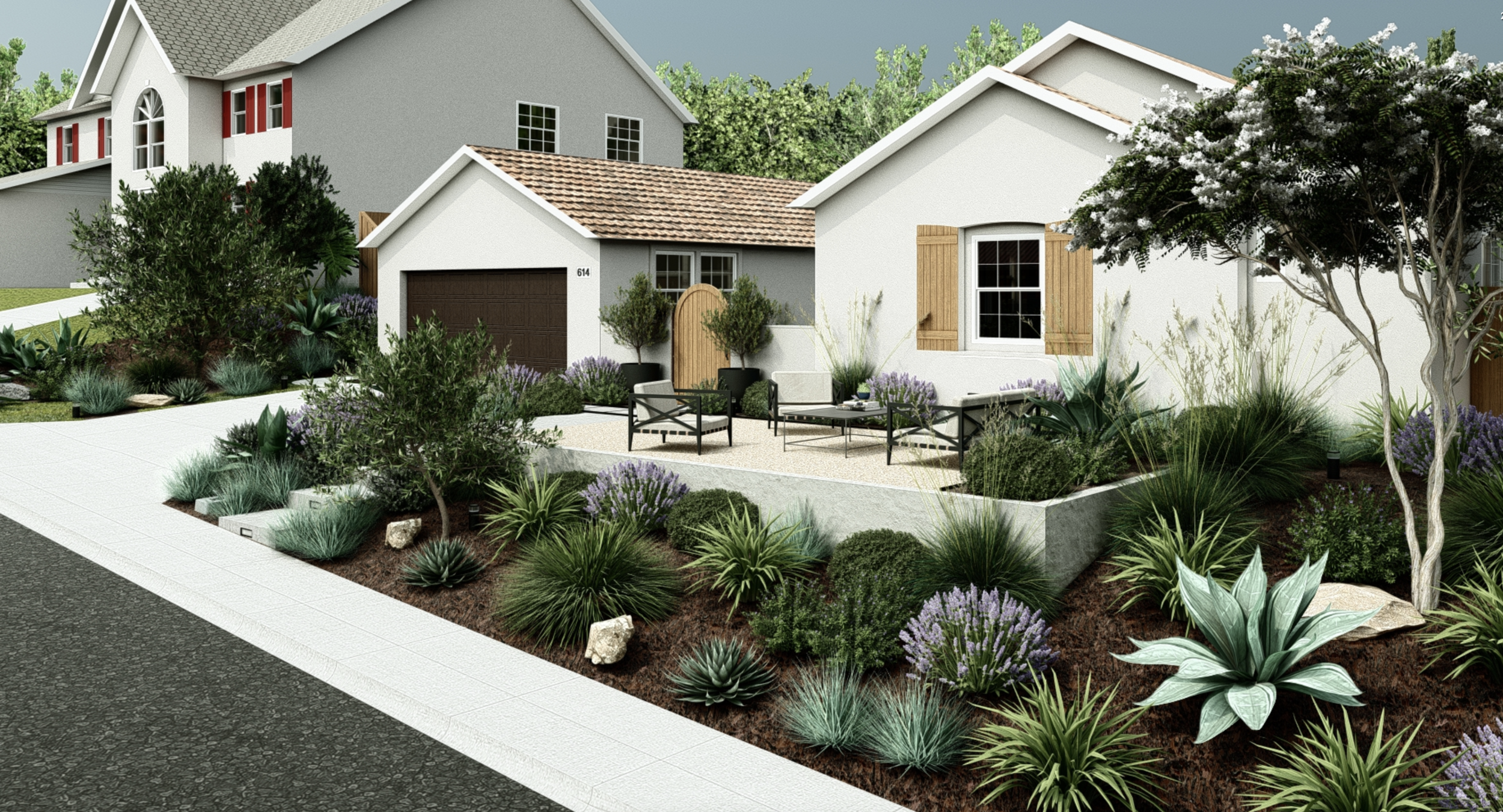

Mulch at the base of this Yardzen yard
Mulch: $2 per square foot
Mulch is cheap, portable, and easy to install and replace. Check out our blog posts about Dog-Friendly Yards and Kid-Friendly Landscaping to learn more about mulch that is safe for kids and dogs to play on. It is not, however, going to replace a travertine pool deck.
Put mulch where it looks good, like around plants, under tree canopies, or in places that have a natural, laid-back vibe. It’s a great, low-cost option for places that look like forests, but you should usually stay away from it in areas with a lot of foot traffic or good visibility.
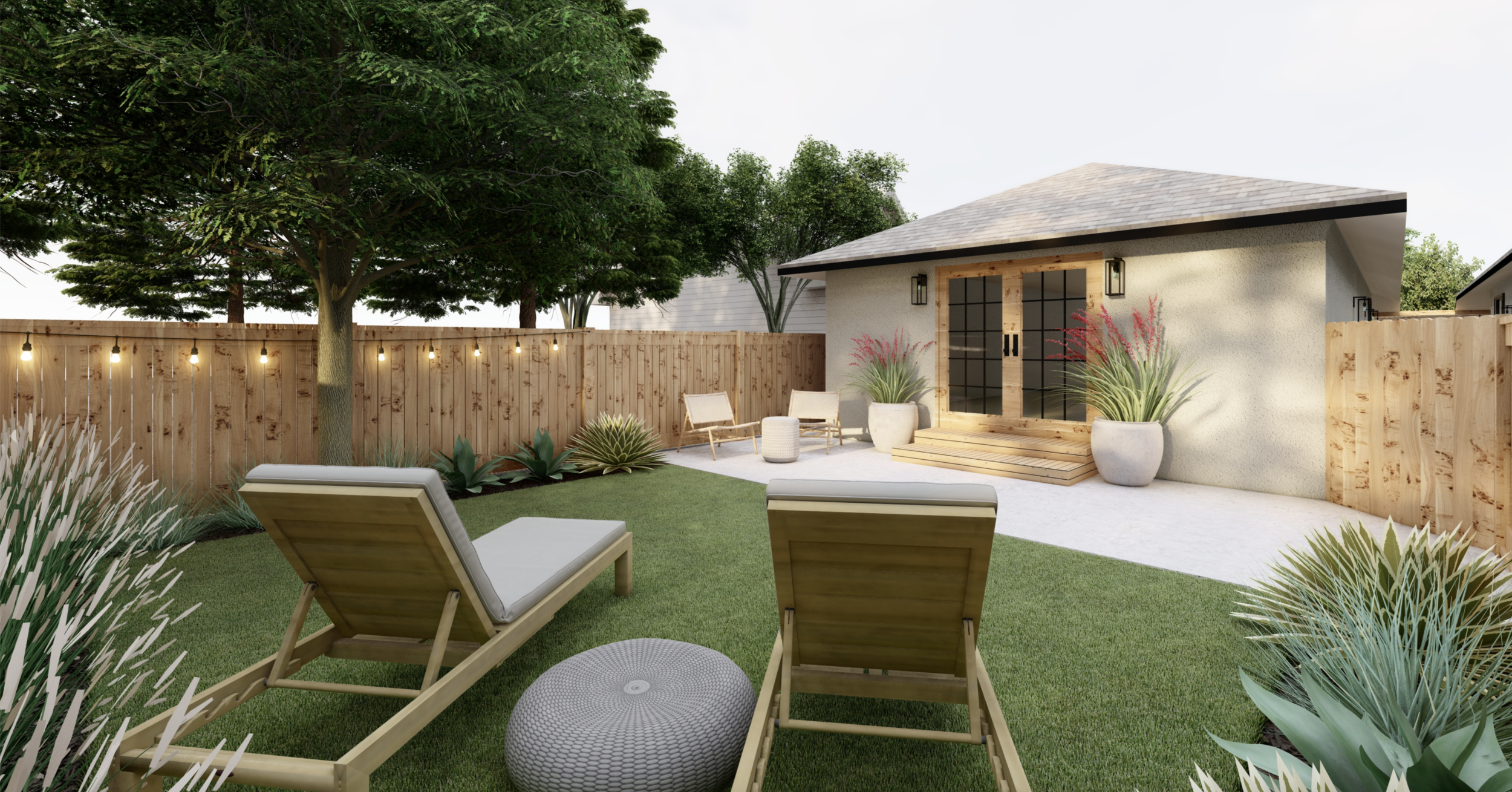

Artificial turf is a great, water-smart solution for many yards
Artificial Turf: $20 per square foot
We tend to think of artificial turf as softscape, but it’s perhaps the most versatile landscape surface available. Turf is easy to maintain, generally quite durable, and can be very attractive. It can be quickly changed from a play area to a picnic area, and it can even be used instead of a pool deck.
Turf gets hot in direct sun, and tends to degrade more quickly with prolonged sun exposure. It’s worth the extra money to buy better turf products because they work better and last longer, so they cost less over time.
Check out our Guide to Grass Alternatives to learn more about turf!
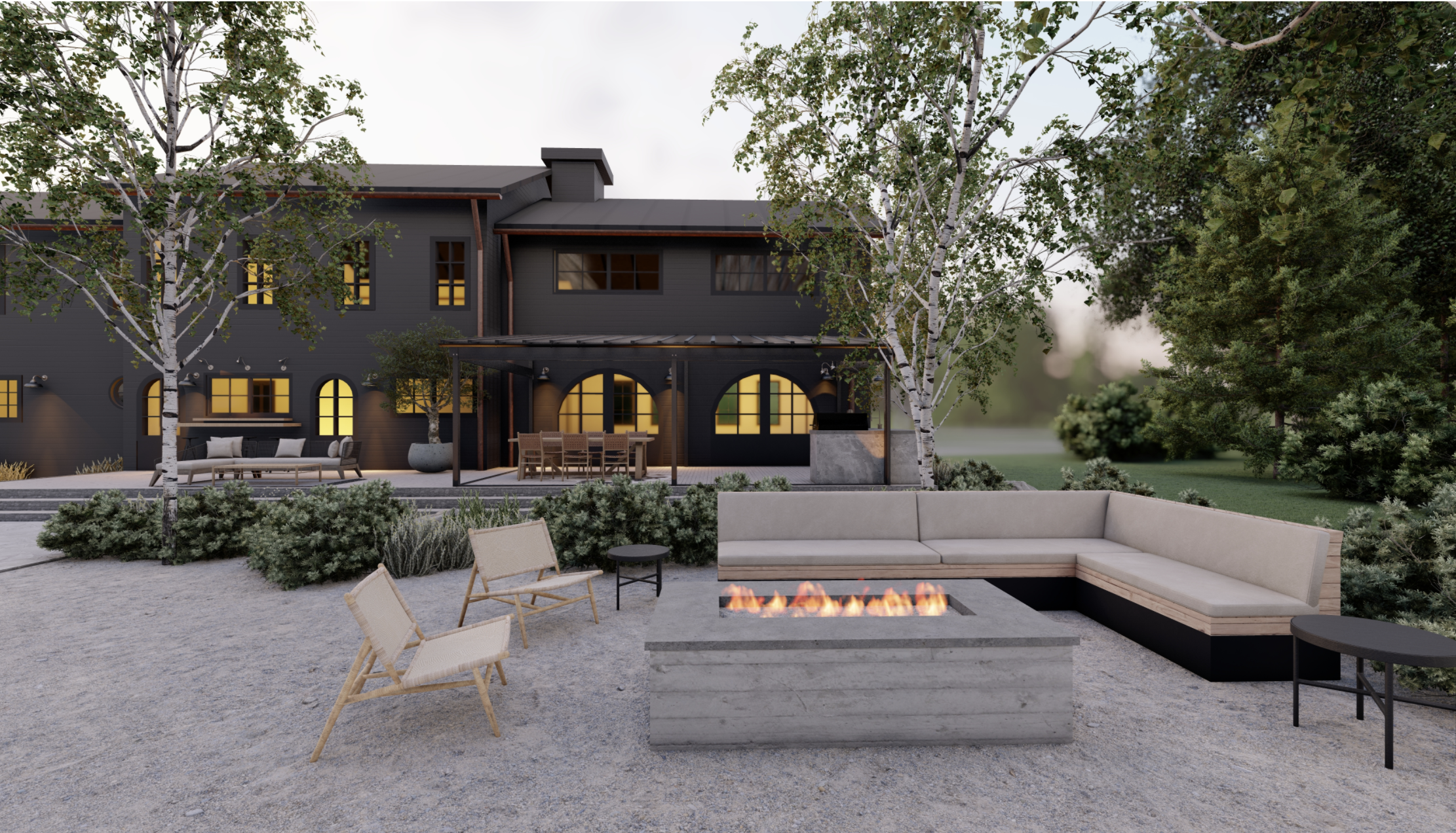

Gray decomposed granite in this Yardzen yard — a beautiful and inexpensive solution to paving
Surface materials are a principle tool for designers to define spaces and establish a style in a landscape. Spending a little more now can save you money in the long run because better materials last longer and need less upkeep.
Still, don’t go too far; pave the most important areas nicely and use cheaper materials for the less important ones.
Whatever material you choose, make sure it complements not only your landscape but your home’s exterior as well. Explore our Exterior Design packages.
Our advice: keep it simple. Limit the number of materials you use, and the amount of paving you install. This will ensure a cohesive appearance, and keep your costs under control.
30% Off Your First Order*
We’re excited to get started on your outdoor project! Fill out our online consultation to unlock 30% off.
*Must be a new email newsletter signup. Cannot be combined with other promotions. Not valid on my Lowe’s Rewards, Starter Packages, Botanical Packages or gift cards.
Wondering if Yardzen is right for your yard?
Receive the latest landscaping tips, trends, and before & afters from the experts at Yardzen!
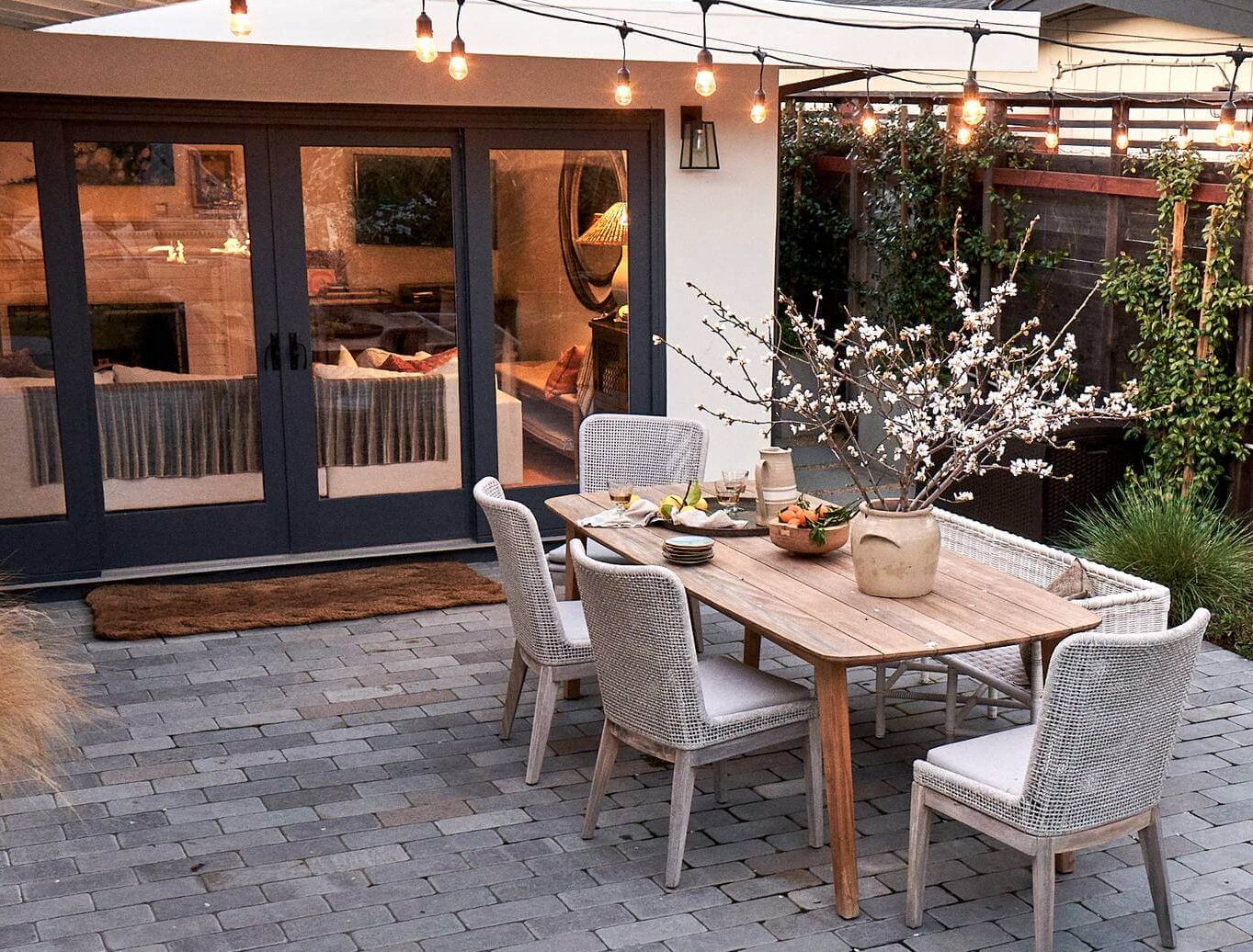
Easiest Patio Pavers You’ll Ever Install!
FAQ
What is the cheapest way to surface a patio?
What is the cheapest way to make an outdoor patio?
What is cheaper than paving?
- A Complete Guide to Caring for Yuki Cherry Blossom Shrub - January 23, 2025
- Identifying Red Hot Poker Seeds: What to Look For When Harvesting Torch Lily Pods - January 23, 2025
- A Complete Guide to Harvesting Evening Primrose Seeds - January 23, 2025

